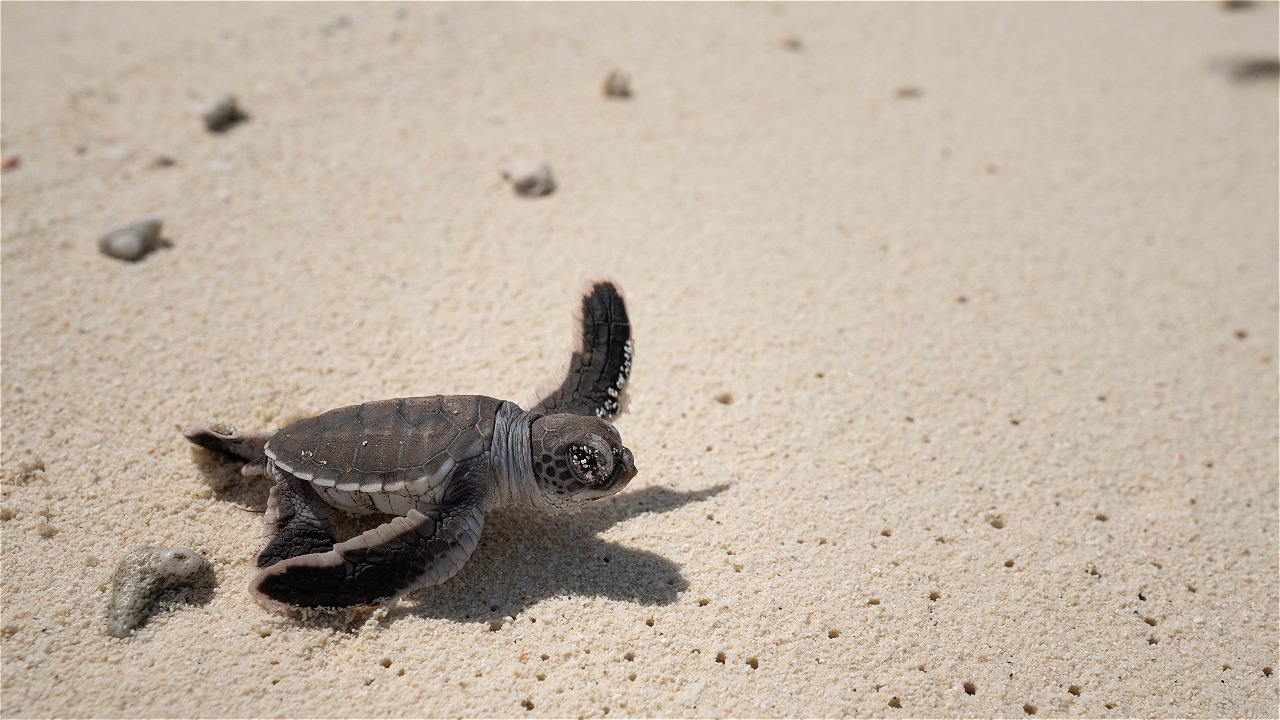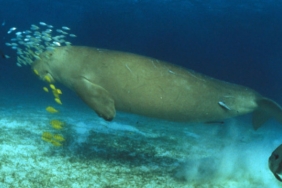PANGUMBAHAN READY TO GEO TAG TREES AND TURTLE NESTS FOR CONSERVATION
By: Ciptanti Putri
Located at the office hall of the UPTD Pangumbahan Turtle Conservation Beach, Ciracap, Sukabumi, WWF-Indonesia conducted a training on geo tagging for field staff of the UPTD Pangumbahan Turtle Conservation Beach as well as a number of members of the Sukabumi Turtle Conservation Group (KKPS) on Thursday (10/12) last week. The training was held to equip the joint field officers who will conduct periodic monitoring of NEWtrees buds planted in the buffer forest area of Pangumbahan Turtle Conservation Beach. The material was delivered by Dudi Rufendi, NEWtrees Program Coordinator of WWF-Indonesia, who was accompanied by Jerry Q. Mentang, NEWtrees Program officer in charge of technical and application development of geo tagging.
The morning activity was opened by the Head of UPTD Pangumbahan Turtle Conservation Beach, Ahman, who hoped that all participants would be able to absorb the knowledge they would soon get and apply it well in the field. "Currently, information technology is something that we must learn and utilize. Moreover, UPTD Pangumbahan Turtle Conservation Beach has a target to be independent so the existence of an official website is crucial so that we are at the forefront in sharing information on activities to a wide audience." Before symbolically opening the activity, Ahman expressed his appreciation to all those who faithfully help conservation efforts in Pangumbahan.
The training took place in an informal yet solemn atmosphere. In the first session, Dudi explained the function of geo tagging as an easy, cheap, and reliable monitoring tool. All it takes is an Android smartphone with the open source application "Open Data Kit" (ODK). In tree monitoring activities, an officer simply takes a sample of each type of tree planted in a 1 hectare area (or an average of 400 trees planted), takes a photo of its profile, and then enters a number of information related to the condition of the tree. Through the ODK app, the photos and information are sent to the server and posted on the NEWtrees website for donors and the public to access.
The participants were enthusiastic as Jerry explained the stages of using the ODK application on a mobile phone, including the various tagging objects, how to download the ODK application to a smartphone, and how to set up the features and use them in detail. Jerry provided two smartphones for simulation, and each participant took turns testing them.
In the next session, Dudi again invited the trainees to watch a presentation on the screen. This time he explained a new program initiation for turtle nest adoption called "Turtle Hope". The plan is to run the program's pilot project in Pangumbahan Beach. "We think Pangumbahan Beach needs this program to tighten the monitoring of turtle nest conservation, in addition to the level of readiness of the UPTD Pangumbahan Turtle Conservation Beach in implementing the program that is already adequate," said Dudi. The "Turtle Hope" program will open opportunities for concerned parties to contribute to the efforts to restore natural turtle nesting, by adopting turtle nests. A regular monitoring system based on guarding by officers and geo tagging will be implemented in this program to ensure the safety of the nests and the natural process of hatching turtle eggs.
There was a participatory discussion between the presenters and the participants regarding the implementation of the two programs. The participants, who are conservationists in the field, shared a lot of information about various challenges and obstacles, but were also able to jointly explore a number of alternative solutions.
The training was closed with a live geo tagging simulation of tree objects and turtle nests by all participants.





